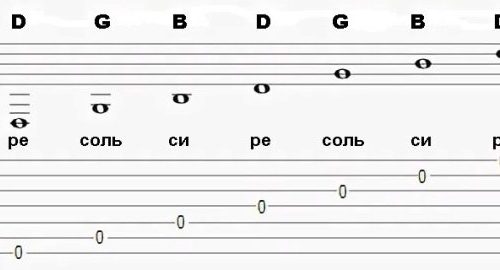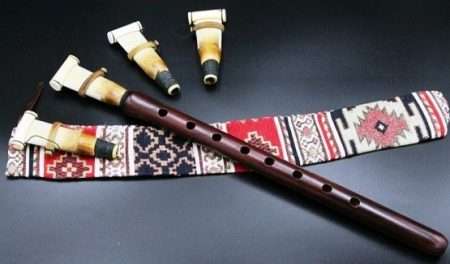How to learn to play Drums from scratch
Contents
Today we will talk about whether it is possible to learn how to play the drums if you have no experience at all. What you need to start learning right now, what teachers can teach you and what you need to do to quickly master the technique of playing the drum kit.
Where to begin?
The very first thing you need to decide for yourself is what is your goal of learning: do you want to play in a group or for yourself, relax, comprehend something new or develop a sense of rhythm? Next, we choose the style we want to play: rock, jazz, swing, or maybe even classical orchestral music. Absolutely anyone can learn to play the drums, the most important thing is perseverance and patience. Nowadays, there is a lot of training material to develop your technique. If you have your own instrument, it is possible to learn how to play drums on your own, but learning from a teacher will greatly advance the skill. As a rule, the lessons are conducted by a drummer who actively plays in a group, and sometimes not even one.
Drumming from scratch starts with:
- studying notes;
- acquaintance with the drum set with sticks, cymbals, pad;
- correct positioning of arms and legs;
- studying rhythm, speed, style, playing techniques and drum placement;
- landing behind the drum set.
What awaits you in the first lesson?
As a rule, in the first lesson we learn to play the drums on our own with our first rhythmic pattern. However, do not think that if you went to the teacher, then your work will end only with lessons. Learning also includes self-study.
The best teachers of the music studio will give you certain tasks to develop the skill.
If you study at the MuzShock music studio with a teacher, you can also come to study on your own absolutely free of charge.
Drumming courses for beginners are held for children and adults. Boys and girls, women and men will be able to quickly master the technique. Drum lessons from scratch are available even to a child.
What you need to start learning:
- drumsticks (A5 is suitable for beginners);
- headphones;
- metronome (application on the phone);
- pad for independent practice outside the music studio.
Over time, teachers will tell you how to choose a drum kit and how to play drums at home. If you are not ready to buy an instrument, we will show you how to learn how to play drums without drums.
How long does it take to learn how to play drums?
The timing is different for every student. It all depends on the desire and time spent on classes. Most students can easily play their first songs after a few months. Of course, the drums need to live. Do at least 20 minutes, but every day. It is necessary to do the warm-up of the arms and legs, which you will be taught in the classroom. They will also teach you how to work with the pad, show you the main rudiments and paradidles. You will learn what grace notes, up-downs, deuces and accents are. Practicing on the pad is very convenient because you can always take it with you wherever you go. With it, you can practice everywhere, your level of playing will progress, as the pad simulates playing a snare drum.
Why is it better to study in a music studio?
The very atmosphere that prevails in music classes encourages you to develop your playing skills. You will be surrounded by the same students. You will not disturb neighbors or relatives by playing instruments. You can rehearse your favorite songs and record cover versions on them. At the very beginning of your training, the teacher will help you score the songs you want to play. This is necessary in order to learn and play them on your own. Over time, you will learn how to shoot and play your favorite songs. The study of different techniques, the duration of the measures, their grouping will help you learn how to play not primitively, develop your own style and subsequently compose your own, unique music. Here you will meet interesting people, musicians, have a great time in the classroom, and be able to play in a real band!
Useful information
Drums are a musical instrument that sets the rhythm of the ensemble and energizes the audience. To maintain the rhythmic pattern, the drummer repeats musical figures and places accents in the melody, giving it expressiveness. Some pieces of music include drum solos.
The drum set in the standard kit consists of three types of cymbals and three types of drums. The style of the composition and the nature of the drummer’s playing determines the composition of a particular drum kit. Jazz is known for intricate rhythmic patterns and drum solos, while in rock music, drums play expressive energetic parts. In the genre of popular music, drums play a simple rhythm without dynamics in volume, in metal they play at a fast pace, using two bass drums or a double pedal. Some drummers complement the kit with percussion percussion instruments: shakers, bells, percussion drums. The sound extraction on the drum set occurs with sticks, and on individual elements – with pedals; The musician uses both hands and feet to play.
Musicians buy an assembled drum kit or components separately. To extract a sonorous short sound, a ride cymbal is used, a powerful sound with a rattling gives a crash. Hi-hat is controlled by a pedal, by design two cymbals on one rack. When the musician presses the pedal with his foot, the cymbals hit each other, making a ringing sound. The element of the setup that sets the rhythm of the composition is the snare drum. The snare drum is played with sticks. Low, thick sounds are produced from the bass drum (kick) using a beater pedal. Drums tom-toms are also present in the standard drum kit, the number of tom-toms varies from one to six.
Common drum kits are acoustic or live. The sound is produced due to the natural vibration of the air, which is created by the membrane and the shell of the drum.
Electronic drum kits are pads with sensors that pick up the beat. The sound is processed by the electronic module and sent to the speakers or headphones. The volume is adjustable, so they rehearse at home on such a setup.
There are acoustic installations with the addition of electronics. They look like acoustic, but electronic sensors are attached to the membranes. They process the signal generated by the vibration of the membrane: distort the sound, make it louder or record.
Training drums consist of metal plates covered with rubber. When playing training drums, the musician does not create sounds. The training unit is cheaper than the electronic one, so it is more often used.
A rhythmic pattern is also created using software and hardware. Such recordings are used for studio recording or in performance.
A beginner drummer develops a sense of rhythm and learns the tricks of creating accompaniment for different musical styles. A drummer who knows how to set the rhythm of a jazz composition, rock or metal is valuable for every musical group.
How to choose a drum teacher
Choosing a teacher for instrument lessons is not an easy task. The first teacher gives basic knowledge, builds the foundation on which a professional musician grows. The choice of the first teacher is complicated by the fact that the student has no experience, and it is quite difficult to assess the level of professionalism, at first glance.
Drums are a highly sophisticated instrument and learning to play is not to be taken lightly. Yes, there are virtuoso self-taught drummers, but this is an exception. To master the drum set at a professional level, you need regular training, a competent teacher and a desire to play better and better. Having mastered the basics, you will begin to rehearse on your own and develop in your favorite direction, and attend classes for consultation and work on mistakes.
profile education. There is always a chance to run into an excellent teacher without a musical education; but the chances increase if you look for musicians who have completed a training course in a specialized institution.
Ability to teach. Having an education does not mean that a musician is a good teacher; after all, music and teaching are different professions, and in universities and colleges they teach to play, not to teach the game. How to evaluate the ability to explain the material? Talk to the drum tutor’s students , evaluate the results. If there are results, and they are impressive, there is nothing to worry about. Watch a video of how students play, read reviews about the teacher.
Matching musical preferences. It would seem, what difference does it make what kind of music the teacher listens to? If you want to play heavy metal, and the teacher is interested in jazz and improvisation, then apart from the basics, you will not learn the chips and characteristic features of your favorite style.
emotional comfort. In class, you should not feel embarrassed, uncomfortable, bored or hostile. It is important that it is possible to find a common language with the teacher, to get “on the same wavelength”. The teacher motivates, inspires by his example, and if after the lesson you want to come home and rehearse as soon as possible, then the teacher is what you need.
If you are choosing a drum teacher for your child, consider the points above. Do not forget to talk with the teacher about the teaching methods, the goals of drumming. Monitor the child’s mood; if the kid comes from class not in the mood from time to time – you should think about finding a new teacher.
Do not be afraid to go to different teachers – everyone will pass on their experience and make you more professional.





